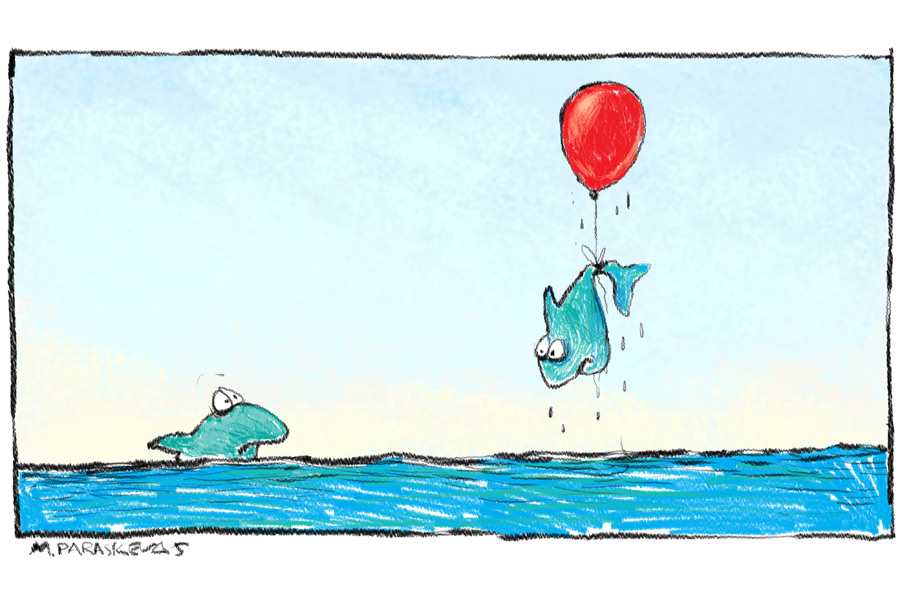New Law Tracks Errant Helium Balloons, Busts Inflators for Littering

This is the time of the year that those little festive helium balloons get washed up onto the beach. The autumn winds are strong. The balloons have had their time, bobbing around in the stratosphere for months with HAPPY BIRTHDAY or CONGRATULATIONS on each side, getting in the way of air traffic, blurring images from astronomic observatories, diverting migrant bird flights and so forth and so on before finally falling into the sea, where they often remain during September and October, until finally, in November, they get swept ashore. Beachcombers find them, usually partially deflated, or just plain flat. They are now litter.
They begin their lives, of course, from the front lawns of the summer mansions of the wealthy, launched before crowds of family and friends to celebrate this and that, usually after a toast or the presentation of some sort of award. They certainly do present a dramatic exclamation point to any major event. And then they waft away, getting higher and higher and smaller and smaller, and then nobody can see them anymore.
Fortunately, last year, the State of New York passed their new law requiring all helium balloons to have tiny tracking devices attached to their stems. This law was initially passed at the request of the United States Weather Service, which thought that being able to track these balloons would help them predict weather patterns, wave heights and storm directions, and that is certainly true. But after the law was passed, certain other law enforcement agencies asked if they could make use of the balloon tracking information, too.
There are laws against littering, not only on land but also in the skies and in the sea. And so, before the law went into effect this past May, an amendment to it was approved requiring that all makers of helium balloons install tracking devices that not only mark the balloon’s in-the-moment progress, but also store information about where it has been since it was activated at the particular summer lawn or beach party. This information is kept in a tiny hard drive on each balloon stem. Beachcombers who come across helium balloons on the beach this month are asked to collect them, pop them if they are partially inflated and taking up too much space, and then bring them to their local police department headquarters. From there, they will be passed on to the Helium Tracking Division in Albany where their mini hard drives will be downloaded to a megacomputer and analyzed. (Those that have crossed state lines are forwarded to a similar agency in Washington.)
Thus, with the balloon’s flight history known, it is possible to mark up a chart showing the balloon’s journey all the way back to its source, back to the particular lawn or beach party where it was launched. As the date and time will also now be known—information is date- and time-stamped—it becomes possible, by consulting real estate tax records, to determine the name and address of the property owner, whether in the Hamptons or in New York City, and then mail them summonses for littering the beaches, interfering with ship traffic, blocking scientific experiments being conducted by astronomers, sending flocks of birds off course, causing the death of those birds that fly into the balloons and become entangled with their strings, confusing fish, crossing state lines and making an unnecessary use of a lighter-than-air gas (helium) that contributes to global warming.
The State of New York expects the $12 billion raised this November to be divided up amongst the State’s Environmental Agency, the State Parks Commission and the New York State Grammar School Educational Service to improve the education quality to our young.



